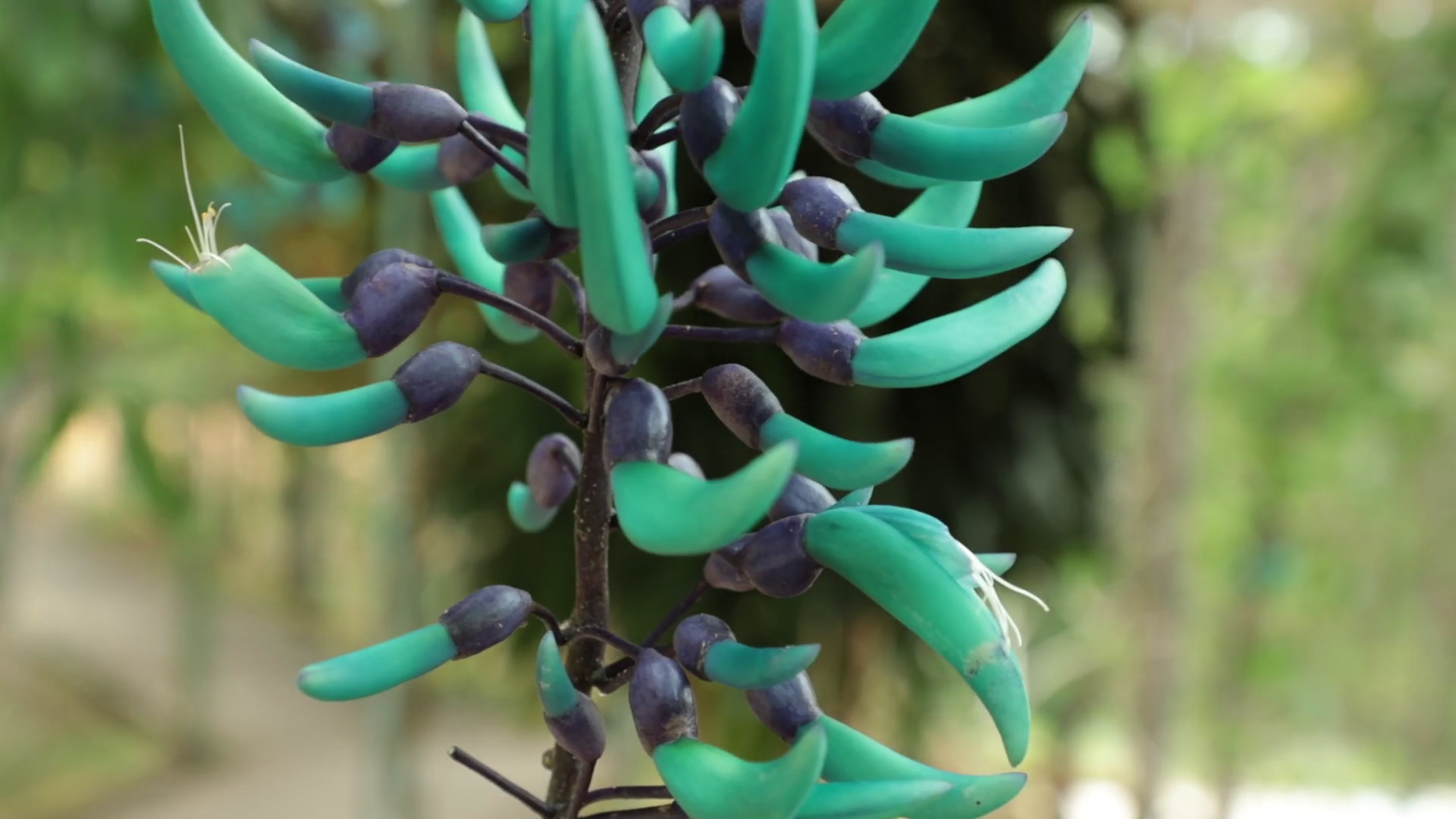Strongylodon, commonly referred to as the Jade Vine, is a remarkable and captivating plant native to the lush tropics of the Philippines. Known for its stunning turquoise flowers and impressive growth, this perennial from the Fabaceae family enchants plant enthusiasts worldwide. Whether grown as a liana, bush, or shrub, Strongylodon can transform your garden or indoor space into an exotic paradise. However, cultivating this beauty requires a touch of horticultural expertise. In this comprehensive guide, we will explore everything you need to know to successfully nurture Strongylodon, ensuring it thrives and blossoms in all its glory.
Understanding the Jade Vine
The Strongylodon’s growth and beauty are celebrated worldwide, with its shoots in nature stretching up to an astounding 18 meters in length. This vigorous growth rate demands ample space and proper support, allowing it to reach its full potential in both outdoor and indoor settings. The Jade Vine does not adhere to a strict resting period, allowing for continuous nurturing without seasonal interruptions.
Optimal Temperature Conditions
To ensure that Strongylodon remains healthy and vigorous, it is crucial to maintain an optimal temperature range of 68-86°F (20-30°C). Avoid temperatures below 59°F (15°C), as this can significantly damage the plant’s roots and overall vitality. Ensuring a stable temperature environment is paramount for both young and mature plants to thrive.
Humidity and Lighting Needs
Humidity plays a vital role in the Jade Vine’s health and aesthetic appeal. While Strongylodon prefers high humidity, it can adapt to typical apartment conditions. If air dryness becomes an issue, placing the plant over a tray of wet pebbles can provide the necessary moisture. Light is another crucial element; both summer and winter require bright, direct or diffused sunlight to encourage healthy growth and eventual blooming.
Soil and Watering Requirements
Strongylodon’s roots thrive in a fertile, peat-based substrate. Ensuring excellent drainage is key to preventing root rot and other soil-related issues. Watering should be intensive and thorough throughout the year, allowing the top layer of soil to dry slightly between each session. Slow watering until excess water drains ensures even distribution of moisture to the roots.
Feeding and Reproduction
To promote healthy growth and flowering, feed Strongylodon with a complex mineral or flowering plant fertilizer twice a month during the active spring and summer months. This feeding schedule supports robust growth and the development of the plant’s striking blossoms.
Strongylodon can be propagated either vegetatively or from seeds. Fresh seeds require scarification and soaking to enhance germination, with sprouts typically appearing about ten days post-sowing. Optimal vegetative reproduction is achieved in spring, where cuttings are rooted in a peat and sphagnum substrate and nurtured in warm conditions with plastic covering to retain moisture. New growth typically surfaces after approximately six weeks.
Blooming and Flower Care
Patience is required when awaiting the first bloom, as Strongylodon does not flower before its second year, once the stem reaches at least 2 cm in diameter and several meters in length. Adequate lighting is essential to encourage the development of large, spectacular inflorescences that can extend up to 3 meters, with individual flowers measuring around 6 cm.
Transplanting and Maintenance
Transplanting should be approached with caution; larger plants thrive best when not frequently disturbed. Opt for planting in a spacious container to accommodate future growth, and annually replenish only the top few centimeters of soil. Young plants, however, may be transplanted each year to support their rapid development.
Providing structural support is crucial for Strongylodon, especially to display its magnificent blooms to their full effect. Pruning is recommended in spring to maintain shape and promote healthy growth. However, avoid aggressive cuts, as flowers are produced on both young and mature shoots.
Pest and Disease Management
Strongylodon is vulnerable to common pests such as mealybugs, aphids, and spider mites, as well as fungal infections. Regular inspection and prompt treatment with appropriate insecticides or fungicides can help mitigate these issues and ensure the plant remains vigorous and healthy.






